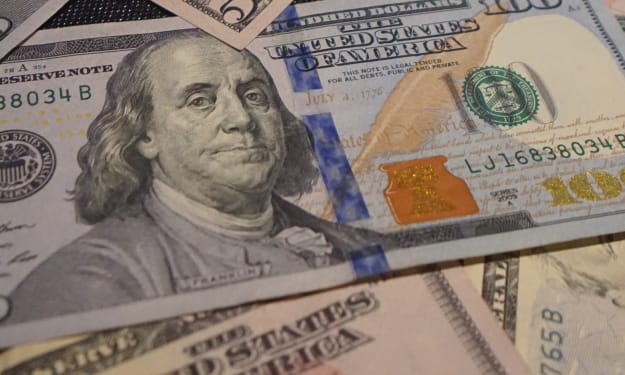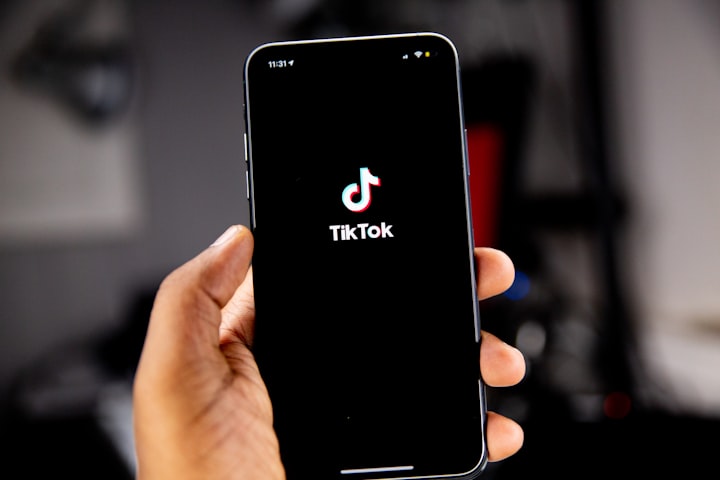Sorry, The Poor Have More Income Than You
The Income Inequality numbers reported are bogus

If we want to accurately explain the myth of income inequality, we must go back to pre-Covid numbers.
With businesses closed, masks required, take-out only, employment depending on jabs, and people out of work the numbers would be skewed.
So, for this article, I’m going to use 2017 numbers when Bernie Sanders and Elizabeth Warren were all about the glaring unfairness of income inequality.
Inflation was low, gas prices were reasonable, there was toilet paper and hand sanitizer on the shelves, and things were for the most part normal.
Bernie and Liz were taken in as were the rest of us by the faulty information put out by the government.
Or should I say the lack of information put out?
A Sample of Bad Government Information
Think about inflation. Are inflation numbers accurate? What’s missing?
Food and Fuel are not included in government inflation numbers because they’re world commodities not influenced only by the US.
Does that make inflation any less painful if part of the equation that directly affects you is excluded?
Does hearing an 8 percent inflation rate rather than 15-18 percent make you feel any better when you reach for your wallet?
The government does the same thing when measuring income — they leave some important income information out.
What Is Income and How Is It Measured?
There are five tiers of income earners that the US Census reports on.
Lower-class 20 percent, lower-middle-class 20 percent, middle-class 20 percent, upper-middle-class 20 percent, and rich 20 percent.
That’s 100 percent by advanced calculus.
Are The Poor Really Poor?
The US government has at my last count 126 poverty programs. There haven’t been less than 100 in the past ten years.
In 2017 it was reported that the bottom 20 percent of income earners in the US had an income just below $7,000 on average and 64 percent of those working-age earners were unemployed.
Sounds like abject poverty to me.
Here's the problem with that $7,000 number.
There are taxes and “Transfer Payments” that are income but are not included in that number by the census because they’re not always received by the individual as cash.
Transfer payments are things like Welfare, SNAP (food stamps), Aid to dependent children, Medicaid, utility assistance, rental assistance, school lunch programs, TANF (Temporary Assistance to Needy Families), and the (ETIC) Earned Income Tax Credit.
You can qualify for the EITC if you’ve earned income under $57,414 (Who came up with the $414? Not $415?) and have investment income below $10,000. (SOURCE)
All are valid forms of income for the needy, but they’re not reported as income. And none of these benefits are taxable as income.
When you add the dollar amounts of these transfer payments and tax reductions to the $7,000 average the lowest 20 percent of income earners get an average income of $48,000 and change in spendable total income benefits.
If we go back to Lydon Johnson’s Great Society idea, we find that between 1967 and 2017 the transfer payments and other poverty program benefits to the poor increased by 269 percent.
This isn’t my opinion or my numbers this is what the government reports— or in the case of income inequality doesn’t report.
Don’t shoot the messenger just because you don’t like the message.
You can find these numbers just as easily as I did.
What About the Lower Middle-Class and Middle-Class 20 Percent?
The lower middle-class 20 percent of wage earners raked in $31,811 on average and only fifteen percent of those were unemployed.
Funny how if you work you have a little more money.
Transfers and taxes increased their income to $50,492 just three and a half percent more than those in the bottom 20 percent who are mostly unemployed.
The American middle class earned on average $66,453 and only 8 percent of those were unemployed.
But unfortunately, these middle-class folks must pay taxes, so they only get to keep $61,350 for being hard-working employed taxpayers.
The result is that the almost fully employed, tax-paying, working middle class only gets about 26 percent more income than the lowest 20 percent who are mostly not working.
Are you beginning to see why there are so many “Now Hiring” signs around your neighborhood?
Why work when you’re only paid 26 percent less not to.
To sum up, the bottom 60 percent of all income earners have very little space between their incomes.
Depending on how you define incomes.
Household Size Plays a Big Part
In addition to the above, we must also examine thehousehold size and how that relates to per capita income from government poverty programs.
In the lowest 20 percent of income earners, the average household size is 1.92.
Using the rounded down $48,000 average number above means that the per capita income of this 20 percent would be $33,653.
The lower middle group has 2.41 persons meaning they would get $29,497 per capita on average. (Less than a full-time $15/hr. job)
The middle-class 20 percent would get $32,547 per capita.
Both are less than the bottom 20 percent per capita income level.
The bottom 60 percent of American households have basically the same income per capita give or take a few bucks here and there due to tax breaks and transfer payments.
It Gets Worse.
Using the per capita information, the average bottom 20 percent of income earners received 14 percent more per capita income than the lower middle and 3.3 percent more than the middle-class grouping.
Incentives to get off the Poverty Train
Since Johnson’s Great Society when 68 percent of the bottom 20 percent were working by 2017 only thirty-six percent were working.
Bill Clinton signed legislation that added a work requirement to receive assistance from various government welfare programs.
That policy was relaxed and nearly eliminated when the Great Recession and Financial Meltdown of 2008 and 2009 occurred.
Ten years later Covid also relaxed the work requirement further until enforcement was almost nonexistent and totally forgotten.
Especially in election years.
As a result, the workforce participation rate is now at the lowest it’s been in 40 years.
On the graph below you can clearly see when the work requirement was relaxed and the economic result.
https://data.bls.gov/pdq/SurveyOutputServlet
Unemployment benefits during that time were a staggering 99 weeks – almost two years.
Unless the work requirement is returned and enforced, and people must again trade work for benefits, that thirtysix percent of earners not working will continue.
Where’s the incentive to get off the government gravy train? It sure seems easy to get on it.
Each month the Bureau of Labor Statistics reports the incomes of various trades and occupations.
Below is the current report of hourly and weekly earnings of various professions.
https://www.bls.gov/news.release/empsit.t19.htm
Some Final Thoughts on Income Inequality
There are people in the USA who are suffering and struggling. That’s a given.
I was once one of them.
No money, no job, no prospects, and no contacts. It’s a very tough existence so I can easily commiserate with those in that situation.
But there are also bad actors who are out to scam the welfare system. That’s also a given.
The government is great at passing out benefits but very poor at monitoring that the funds are going to the right recipients for the right reasons.
It’s one reason why the national debt is where it is. Buying votes with free stuff is a long and time-honored practice used by all political parties.
Why not forgive billions in student loans? The bill for that will eventually end up on someone’s desk.
I’ve said many times that unless you’re physically or mentally unable to work being poor in the wealthiest country on earth is a choice.
The US has almost as many educational and training programs as poverty programs.
Too many working-age earners are taking their unfair share of the economic pie we working taxpayers provide. It’s time for a change.
Being paid not to work is not the American Dream we all aspire toward.
I hope you enjoyed reading this.
Don't forget to subscribe and leave a pledge. Thanks so much.
About the Creator
Thomas Egelhoff
Author, Radio Talk Show Host, blogger, YouTuber, Vietnam Vet, half-fast guitar player, average cook, and a really nice guy. I read all my articles; you should too and subscribe. Thanks very much.






Comments
There are no comments for this story
Be the first to respond and start the conversation.